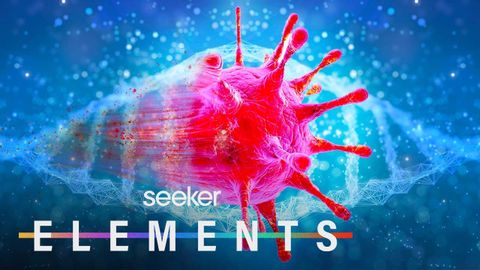病毒塑造了我們所知的地球上的生命,以下是其過程 (Viruses Have Shaped Life on Earth as We Know It, Here’s How)
Summer 發佈於 2021 年 09 月 27 日  沒有此條件下的單字
沒有此條件下的單字US /ˌɪndəˈvɪdʒuəl/
・
UK /ˌɪndɪˈvɪdʒuəl/
- n. (c.)個人;單個項目;個體;個人賽
- adj.個人的;獨特的;個別的;獨特的
US /məˈtɪriəl/
・
UK /məˈtɪəriəl/
- n. (c./u.)布料;素材;資料;材料;物質
- adj.重要的;物質的
US /aɪˈdɛntəˌfaɪ/
・
UK /aɪ'dentɪfaɪ/
